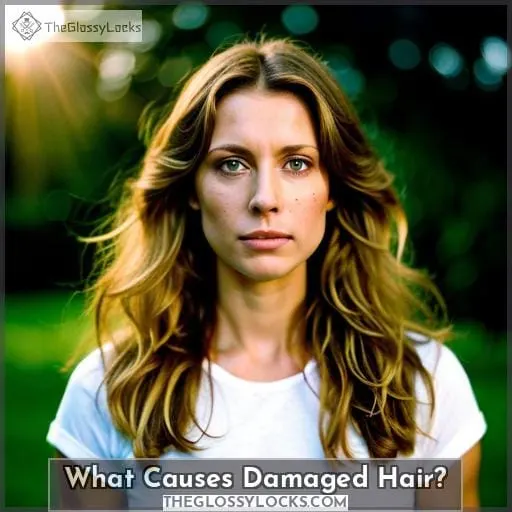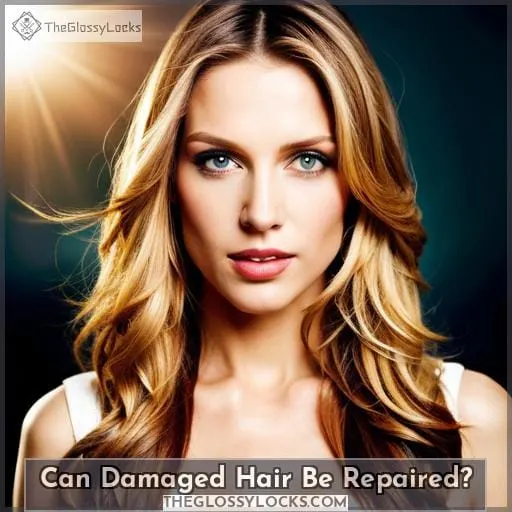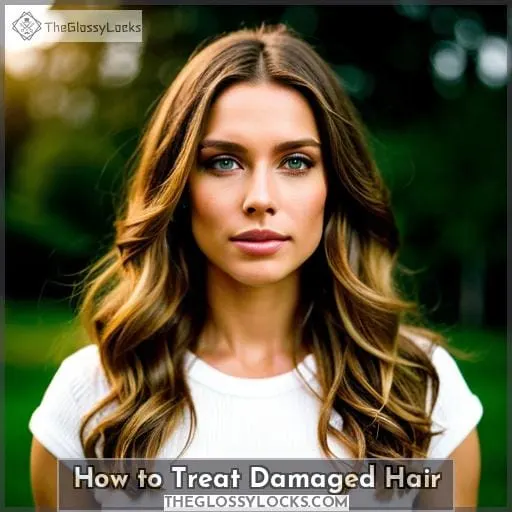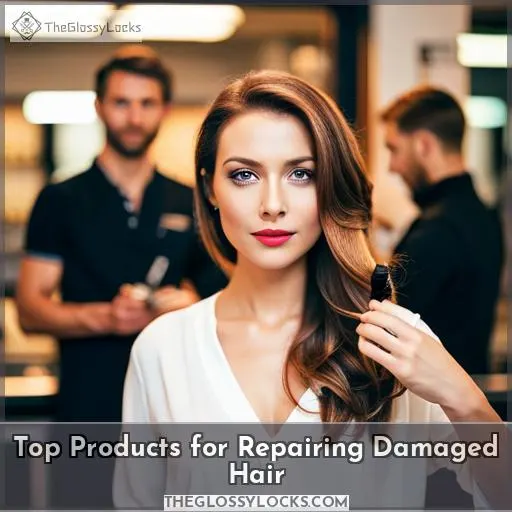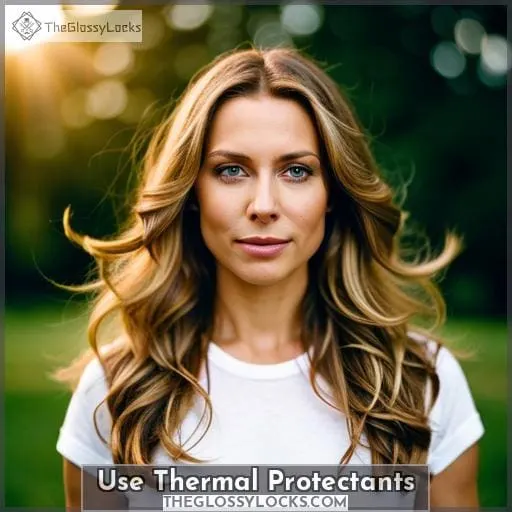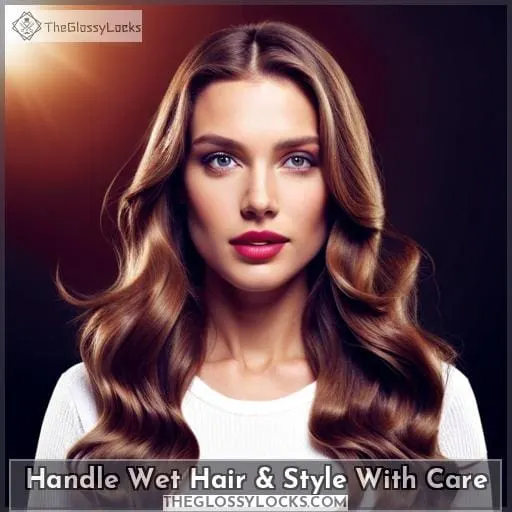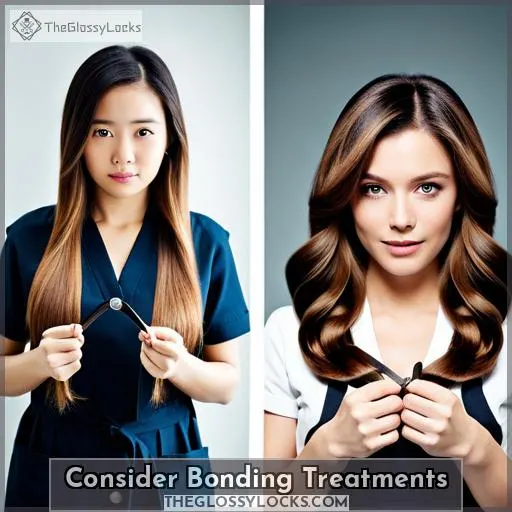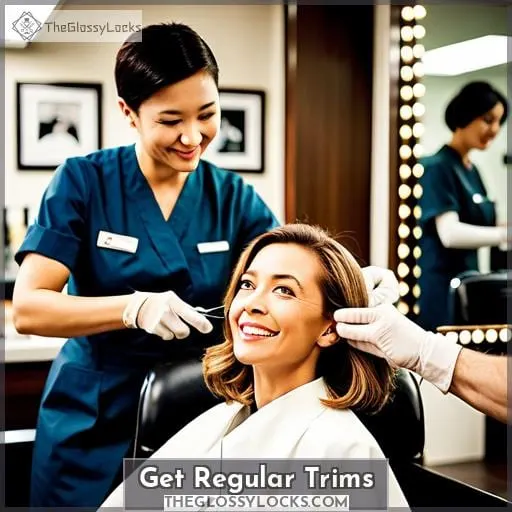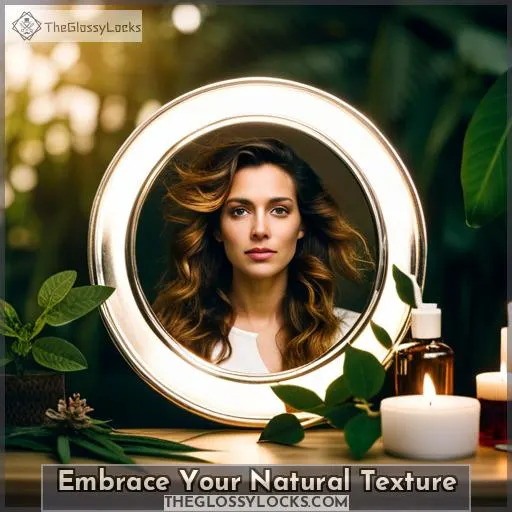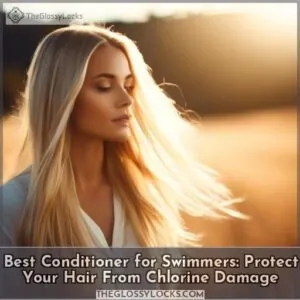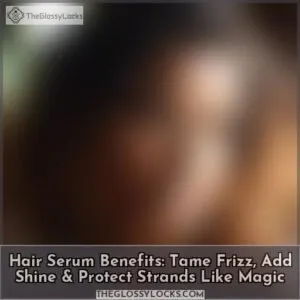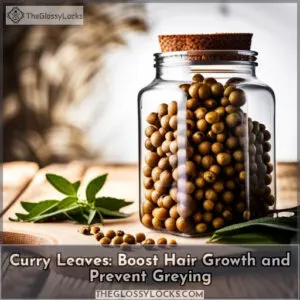This site is supported by our readers. We may earn a commission, at no cost to you, if you purchase through links.
Are you tired of feeling like your hair is beyond repair? You’re not alone. Damaged hair can be caused by a variety of things: bleaching, heat styling, and coloring are just some culprits that could leave your strands lifeless.
But don’t worry—there’s hope! With the right approach and products, damaged hair can be repaired to its former glory.
Table Of Contents
- Key Takeaways
- What Causes Damaged Hair?
- Can Damaged Hair Be Repaired?
- How Do I Fix Extremely Damaged Hair?
- How to Treat Damaged Hair
- Top Products for Repairing Damaged Hair
- Use Thermal Protectants
- Handle Wet Hair & Style With Care
- Consider Bonding Treatments
- Get Regular Trims
- Embrace Your Natural Texture
- Frequently Asked Questions (FAQs)
- Conclusion
Key Takeaways
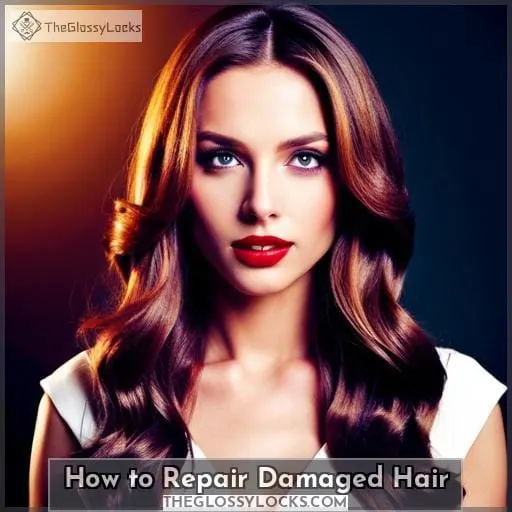
- Use heat protection products and opt for semi- or demi-permanent hair color to prevent damage from bleaching or coloring.
- Incorporate protein treatments and natural oils into your routine to nourish and repair damaged hair.
- Avoid over-washing, heat styling, and harsh chemicals to maintain healthy hair.
- Regular trims, protective hairstyles, and a balanced diet can also contribute to repairing and maintaining healthy hair.
What Causes Damaged Hair?
Damaged hair can be caused by a variety of factors, such as bleaching, heat styling, and coloring. All of these treatments can make the hair brittle or dry over time if done too frequently or with incorrect methods.
However, understanding how to repair damaged hair is crucial in maintaining healthy locks. With proper care and treatment, it is possible to restore your tresses to their former glory.
Bleaching
Bleaching can be a great way to achieve the desired look; however, it’s important to take into consideration the damage that may occur. Bleaching benefits include vibrant colors and longer-lasting hair color. However, prevention of hair damage is key.
Choose your color wisely by staying within three shades of your natural hair color, and dye less frequently for best results.
Heat Styling
Hot tools can fry your strands like crispy french fries, so use them sparingly with healthy hair practices for the best results. Protect your mane from heat damage by using heat protection sprays and masks before styling.
Incorporate protein treatments regularly to strengthen weak fibers and enhance shine. To avoid brittle hair, try embracing some heat-free hairstyles such as overnight beach waves or low ponytails! Using a deep conditioning treatment every week will help keep dryness away too.
Lastly, always opt for natural oil-based products over hairspray where possible. They nourish rather than strip the life out of thirsty locks!
Hair Color
Permanent hair color can dry out your strands, leaving them brittle and dehydrated. Therefore, it is better to opt for semi- or demi-permanent treatments. To prevent further damage, use a color-safe shampoo and apply a heat protectant spray before styling.
You can also try incorporating rice water rinse or apple cider vinegar into your routine for added hydration. Deep conditioning treatments and leave-in conditioners are also great options to repair damaged hair.
Remember to choose a darker shade closer to your natural hair color, minimize heat styling, and give your locks time between coloring sessions.
Can Damaged Hair Be Repaired?
With the right care and attention, it’s possible to improve the look and feel of your hair despite any prior damage. To repair damaged hair, start by avoiding all types of heat styling, bleaching, or coloring.
Incorporate a protein treatment into your routine as this will help strengthen weak fibers.
Use natural oils such as olive oil for deep conditioning treatments. Almond oil can also help soften and fortify strands while argan oil helps prevent breakage from over-styling or brushing too hard. Eating a balanced diet is essential to provide nourishment for healthy locks! Sun protection should be taken seriously; use hats or products with SPF when you’re outdoors to avoid further damage caused by UV rays.
Hair masks are great solutions if split ends have appeared. L’Oréal Paris Elvive Total Repair 5 Restoring Mask contains citric acid which repairs damaged proteins inside each strand through an enzyme reaction process that restores strength and shine from root to tip.
By practicing these preventive measures alongside healthy hair practices like using sulfate-free shampoo/conditioner, applying leave-in conditioners after washing (to reduce frizz), drying with t-shirts instead of towels, etc.
How Do I Fix Extremely Damaged Hair?
Now that you know the basics of how to repair damaged hair, it’s time to explore more extreme solutions.
- Avoid using heat on your hair as much as possible and opt for air-drying instead.
- Incorporate a protein treatment into your routine at least once per month to strengthen weak strands and prevent further damage from occurring.
- Hair-dusting is an effective method for removing split ends without sacrificing length – be sure not to get carried away, though!
- Apply almond oil before shampooing to protect against sun exposure; use sun protection specifically designed for scalp health whenever spending extended periods outdoors during warm weather months.
- Use deep conditioning treatments regularly along with hydrating leave-in conditioners after washing wet hair in lukewarm water and avoid harsh tugging when drying with t-shirts or microfiber towels if necessary.
- Investigate natural remedies such as coconut oil treatments, rice water rinse, or apple cider vinegar rinses that may help restore pH balance within the cuticle layer of severely dehydrated locks.
With proper care practices tailored towards preventing future breakage while repairing existing damage, there’s hope yet!
How to Treat Damaged Hair
If you have damaged hair, there are steps you can take to repair it. Start by switching your shampoo and conditioner for products specifically designed for damaged hair. When washing your hair, use lukewarm water instead of hot. This will help protect the integrity of delicate strands.
To further nourish your locks, treat them with a deep conditioning treatment once or twice a week. Also, switch out your regular brush in favor of a wide-tooth comb. When drying your hair afterwards, be sure to use an old T-shirt rather than heat from a blow dryer.
Use Shampoo and Conditioner for Damaged Hair
To keep your hair looking and feeling healthy, use shampoo and conditioner specially formulated for damaged locks. Conditioners are essential to combat dryness from bleaching or heat styling by locking in moisture.
A protein treatment can help strengthen weak strands while natural oils like coconut oil protect against breakage.
Try a hydrating mask once a week for added benefits that will leave you with soft, manageable tresses.
Wash Your Hair in Lukewarm Water
Wash your hair with lukewarm water to avoid stripping away essential oils and keep it looking healthy. It’s a good idea to use cold water at the end of your wash for extra protection against heat damage.
You should also apply an oil treatment or a protein treatment after shampooing, followed by a fresh water rinse and wide-tooth combing. To restore pH balance in your hair, try using an apple cider vinegar rinse once in a while as well.
Use a Deep Conditioning Treatment
For optimal repair and protection, indulge in a deep conditioning treatment to nourish your hair and restore its health.
Protein treatments like coconut oil can penetrate the cuticle layer of the hair shaft for added strength, while rice water rinse or apple cider vinegar can help balance pH levels.
An argan oil-infused hydrating leave-in conditioner will add moisture back into dry strands and protect from further damage caused by styling tools.
Curly-haired gals should use a curl-enhancing leave-in treatment after washing their locks to keep them hydrated and defined without any frizziness!
For those looking for voluminous blowouts, apply an extra generous amount of conditioner before using heat tools on damp hair for long-lasting results with minimal breakage.
Switch Your Hairbrush for a Wide Tooth Comb
Swap out your hairbrush for a wide-toothed comb to detangle hair without the harsh tugging that can lead to further damage. Why not give it a try? A wide-tooth comb allows gentle strokes on long or thick tresses that help lift cuticles while preventing breakage.
For maximum protection, use heat protectants before styling, avoid overwashing, incorporate protein treatments into your routine, invest in silk pillowcases, and try hydrating masks. Hairbrushes are great for smoothing ends but should only be used when absolutely necessary since they can cause more harm than good if used too often.
Dry Your Hair With a T-Shirt
Try trading in your regular bath towel for a t-shirt when drying hair. It’ll help avoid harsh tugging and protect the strands from breakage. Cotton tees are gentle on fragile hair, preventing further damage caused by rough towels.
Incorporating this simple step into your proper hair care routine can make a big difference in repairing damaged locks.
Remember to use cool water when washing and rinsing, and consider natural texture instead of relying on blow dryers or other heat styling tools. Protect hair from future harm with heat protection products and regular trims or hair dusting techniques using rice water to strengthen strands.
Top Products for Repairing Damaged Hair
You can give your hair the TLC it needs to look and feel its best again by incorporating these top products for treating damaged locks into your routine.
Hydrating leave-in conditioners are great for sealing split ends, reducing frizz, and providing damage protection. Protein treatments help strengthen weak hair fibers while a microfiber towel helps avoid harsh tugging when drying strands.
An apple cider vinegar rinse is also recommended as it helps restore the pH balance of tresses.
Give your mane time to repair in between color sessions with L’Oréal Paris EverPure sulfate-free shampoo – a great alternative from Whole Foods – that won’t strip away essential oils like regular shampoos do!
The American Academy of Dermatology (AAD) recommends gentle haircare practices such as brushing before washing, using cold water rinses instead of hot ones, and sleeping on silk or satin pillowcases over cotton ones.
So go ahead and pamper those beautiful tresses with some much-needed attention today!
Use Thermal Protectants
To prevent further damage, protect your locks from heat styling tools with thermal protectants. Thermal protectants coat the hair fiber in a protective layer that keeps it safe from excessive heat and high temperatures.
- Re-Hydrating Oils: Olive, almond, or coconut oils can penetrate the outer cuticle of the hair shaft and hydrate it from within.
- Protein Treatments: Incorporating protein treatments into your routine can strengthen weak fibers in stressed-out tresses.
- Apple Cider Vinegar Rinse: An apple cider vinegar rinse can restore pH balance as well as remove residue buildup on the scalp caused by shampooing too often or using harsh ingredients like sulfates, which contribute to dryness of strands over time.
When repairing damaged locks, you need more than just one product; rather, a combination of multiple products tailored to individual needs is key! From hydrating oils to protein treatments, incorporating them into your routine will help improve the overall health of weakened strands over time so they stay strong against any future damages that may arise!
Handle Wet Hair & Style With Care
When handling wet hair, use a wide-toothed comb to gently detangle strands and avoid serious breakage. Excess water can weaken your hair, so be sure to blot it with a microfiber towel or t-shirt before styling.
Avoid using heat tools like blow dryers when possible and opt for air drying instead, or try heat alternatives such as overnight braids or twists.
Incorporate moisturizing oils like coconut oil into your routine to nourish damaged locks from the inside out, and consider natural remedies such as apple cider vinegar rinses for added benefits to overall hair health.
Regular dry brushing can also help distribute natural oils throughout the scalp while promoting circulation, which in turn encourages healthy regrowth of new locks post-fresh start haircut.
If you want smooth hair after washing, it is recommended that you use leave-in conditioner specifically formulated for damaged hair, along with proper moisture-retaining techniques during sleep time by sleeping on silk pillowcases.
The table below details some tips on how best to handle wet hair.
| Best Practices | Natural Remedies | Hair Care Tips |
|---|---|---|
| – Blot excess water before styling | – Apple Cider Vinegar Rinses | – Avoid over-washing |
| – Use Wide-Tooth Comb | – Coconut Oil | – Regular Dry Brushing |
| – Air-dry whenever possible | – Olive Oil | – Sleep on Silk Pillowcase |
| — | — | — |
Note: These are just suggestions based on research about this topic, but results may vary depending on individual cases.
Consider Bonding Treatments
Continuing with your hair care journey, you may want to consider bonding treatments. Bonding treatments can help repair damaged hair and keep it strong. To protect the integrity of your strands, try using a heat protectant spray before using any styling tools on them.
Look for moisturizing treatments that contain natural oils like coconut oil or argan oil. These oils penetrate the outer cuticle and hydrate from within, adding shine and luster back into lightened hair shades close to your natural color.
If frizzy hair is an issue, try switching up to more moisturizing shampoos or conditioners. Damaged tresses need extra attention, so make sure you incorporate protein-rich products such as apple cider vinegar rinses once a week.
Get Regular Trims
Getting regular trims can help maintain healthy hair and prevent breakage. Split ends, a common sign of damaged hair, will continue to split up the shaft if not removed. To protect your hair from further damage caused by heat styling tools such as flat irons or curling wands, use a heat protectant spray before each use.
Protective hairstyles like braids or buns are also great for maintaining the health of your locks without using heated products daily. Incorporating protein treatments into your routine is essential in strengthening weak strands that have been damaged over time.
Using correct products formulated specifically for repairing damaged tresses will only fix so much.
Embrace Your Natural Texture
Embracing your natural hair texture is an easy way to keep it healthy and strong. Studies have shown that more than 90% of people are happier with their hair when they embrace its natural shape. Heat protection products can help protect strands from heat styling, while regular trims will get rid of split ends and help maintain the health of your hair.
Natural oils like olive oil or almond oil can also be used to restore moisture in dry, brittle strands.
If you’re out in the sun for long periods, make sure you cover up with a wide-brimmed hat. The sun’s rays can cause serious damage over time if left unprotected. And lastly, don’t forget about common cooking oils like coconut oil, which has been proven effective in restoring hair’s natural moisture balance without sacrificing its health benefits.
So next time you go outside or use heat styling tools on your tresses, take some extra care by embracing what nature gave you.
Frequently Asked Questions (FAQs)
How often should I get a haircut to prevent hair damage?
To keep your hair healthy and prevent damage, it is recommended to get regular trims. Cut off split ends before they worsen, which is usually every four to six weeks. Additionally, avoid over-washing and use sulfate-free shampoos and conditioners.
To provide extra protection, wear hats or use SPF products to protect your hair from the sun.
What are some natural remedies that can help repair damaged hair?
Natural remedies such as olive oil, almond oil, rice water rinse, coconut oil, or argan oil can be tried to help repair damaged hair. For instance, a deep conditioning treatment with one of these oils can be used for best results as it aids in rebuilding broken fibers and restoring shine.
What is the best way to prevent hair breakage?
To prevent hair breakage, avoid using heat styling tools and undergoing color treatments. Instead, use a deep conditioning treatment regularly and opt for wide-toothed combs when dealing with wet hair.
Additionally, use microfiber towels to dry your hair and hydrate your strands with oils such as coconut oil or almond oil. It is also recommended to get haircuts every few months to eliminate split ends and protect your hair from sun damage by using SPF products or wearing hats.
Is it better to air dry or blow dry damaged hair?
It is better to air dry damaged hair as blow drying can strip moisture from the hair, leading to further damage and breakage. For best results, gently squeeze out excess water using a microfiber towel or t-shirt before air drying.
Additionally, incorporate protein treatments into your hair care routine and opt for hydrating products specifically formulated for damaged strands.
What type of diet should I follow to keep my hair strong and healthy?
To keep your hair strong and healthy, focus on a balanced diet with plenty of lean proteins, whole grains, fruits, and vegetables. Incorporate essential fatty acids like omega-3s for hydration and nutrition. Avoid junk food that is high in sugar or processed fats as these can weaken the strands over time.
Conclusion
You may think that damaged hair is a lost cause, but with the right care and products, you can get your hair back to looking healthy and strong. It may take a while to repair the damage, but with patience and perseverance, you can get your hair to look and feel its best.
You don’t have to give up on your hair just yet. With a bit of extra love and attention, you can make your hair look and feel like it did before the damage.

